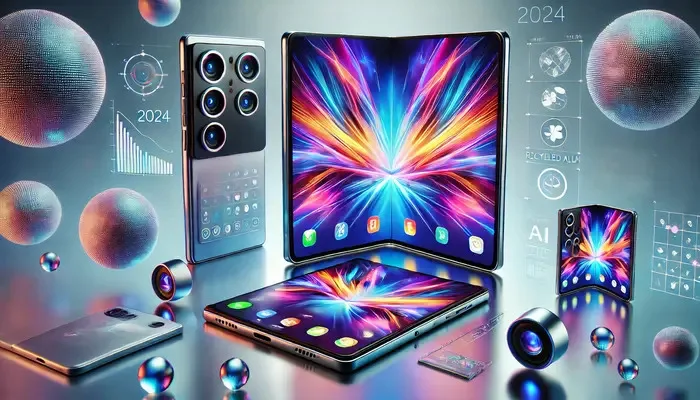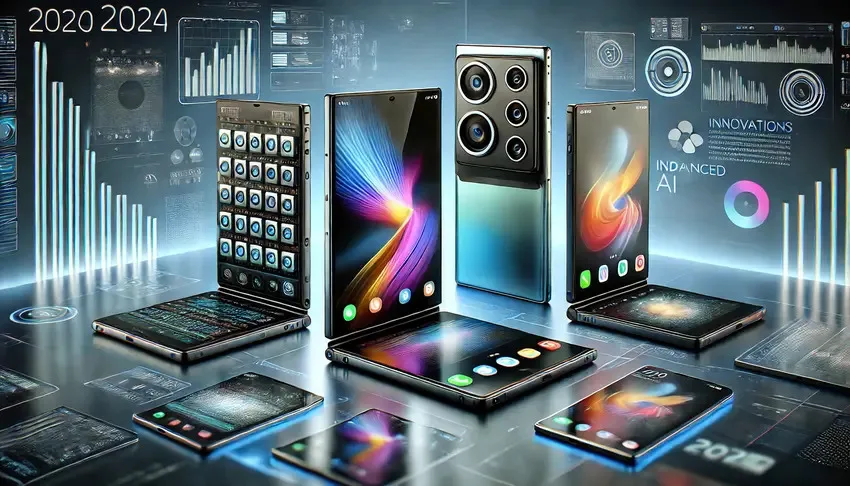
Innovations in Smartphone Design: Trends in 2024
The smartphone industry continues to evolve at a rapid pace, with 2024 shaping up to be a year of significant innovation. This article explores the latest trends in smartphone design, focusing on advancements in screen technologies, materials, user interface, battery life, camera systems, and security features.
Screen Technologies and Innovations
In 2024, the most notable trend in smartphone screens is the widespread adoption of foldable and rollable displays. These technologies offer users larger screens without increasing the overall device size, catering to a growing demand for immersive experiences. Additionally, advancements in OLED and MicroLED technologies provide sharper images, better color accuracy, and reduced power consumption. High refresh rate displays, now reaching up to 144Hz, are becoming standard, enhancing the fluidity and responsiveness of user interactions.
Materials and Design Features
Smartphone materials are also undergoing significant changes. Manufacturers are increasingly utilizing sustainable and durable materials, such as recycled aluminum and bio-based plastics, to appeal to environmentally conscious consumers. Ceramic and sapphire glass are being used more frequently for their scratch-resistant properties. Moreover, the trend towards minimalistic and sleek designs continues, with thinner bezels and seamless body construction becoming the norm. Color options are expanding, with gradient finishes and customizable back panels gaining popularity.
User Interface and Ergonomics
The user interface (UI) and ergonomics of smartphones are crucial for a seamless user experience. In 2024, UI designs are focusing on gesture-based navigation and AI-driven customization. This allows for a more intuitive interaction with the device, as the system learns and adapts to user preferences. Ergonomic improvements include curved edges and more ergonomic grips, reducing strain during prolonged use. Voice assistants are becoming more integrated, providing hands-free control over more aspects of the device’s functionality.

Batteries and Autonomy
Battery life remains a critical concern for smartphone users. The latest innovations in battery technology focus on increasing capacity and efficiency. Solid-state batteries are on the horizon, promising higher energy density and faster charging times. Additionally, AI-driven battery management systems optimize power usage by learning user habits and adjusting performance accordingly. Wireless charging is also evolving, with faster speeds and longer range capabilities, making it more convenient than ever.
Camera and Multimedia Technologies
Smartphone cameras are seeing remarkable advancements in 2024. Multi-lens setups, now commonplace, offer a range of focal lengths and sensor sizes to suit different photography needs. The integration of AI enhances features like scene recognition, low-light performance, and real-time image processing. 8K video recording is becoming more accessible, while new audio technologies improve the quality of recorded sound. Additionally, augmented reality (AR) capabilities are being expanded, leveraging advanced sensors and processors to deliver immersive experiences.
Security and Biometric Technologies
Security remains a paramount concern in smartphone design. In 2024, biometric technologies are advancing with more sophisticated fingerprint sensors, including in-display options, and improved facial recognition systems. The use of AI enhances these systems’ accuracy and speed, providing a seamless and secure user experience. Additionally, advancements in encryption and secure enclaves protect user data more effectively, addressing growing concerns over privacy and cyber threats.
In conclusion, 2024 is a year of substantial innovation in smartphone design, characterized by breakthroughs in screen technology, materials, user interfaces, battery life, camera systems, and security features. These advancements not only enhance the user experience but also reflect the industry’s response to evolving consumer needs and environmental considerations. As technology continues to progress, the smartphone remains at the forefront of personal and professional life, offering increasingly sophisticated and user-friendly features.
